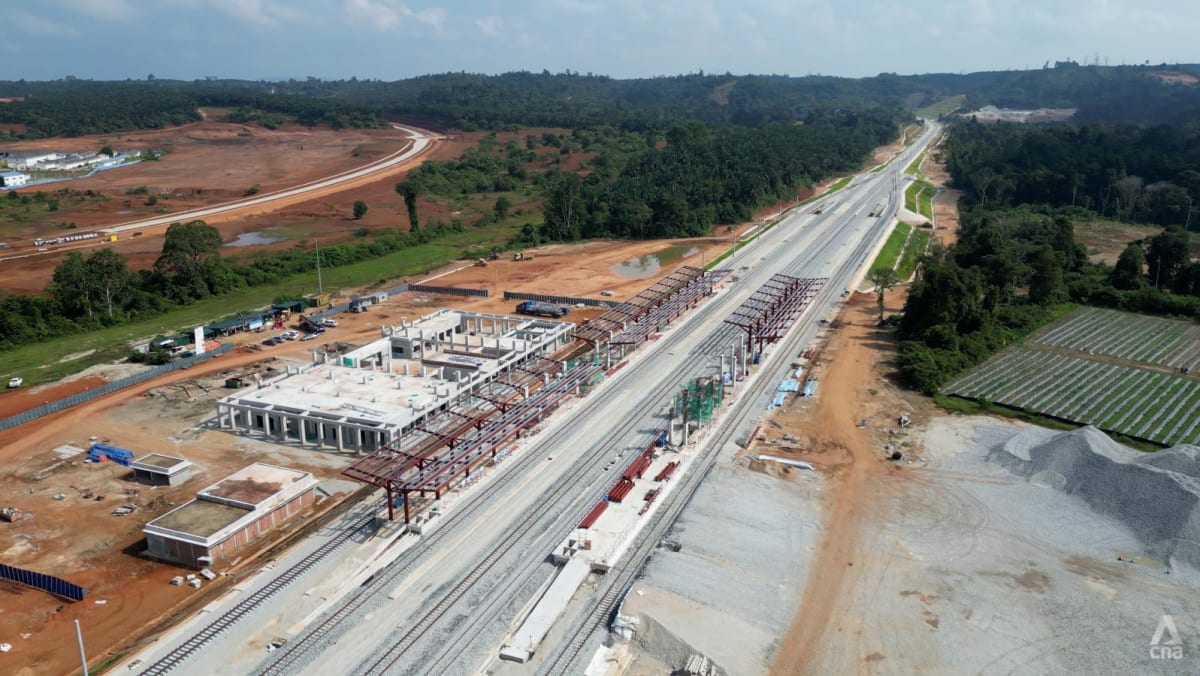Asia
Malaysia’s ECRL: Could railway be a game changer for movement of people, goods across the country and region?

China’s Vision for Regional Connectivity Through the ECRL
During his three-day official visit to Malaysia in June last year, Chinese Premier Li Qiang unveiled Beijing’s ambitious plan to connect the East Coast Rail Link (ECRL) with other China-backed railway projects in Laos and Thailand. This proposal is part of China’s broader strategy to strengthen regional connectivity and further integrate Southeast Asia into its Belt and Road Initiative (BRI). While Premier Li did not provide detailed specifics of the plan, the idea of linking the ECRL to neighboring countries reflects China’s long-term goal of creating a seamless transportation network across the region. This initiative could pave the way for greater economic collaboration, easier travel, and enhanced trade flows between Malaysia, Thailand, Laos, and potentially other Southeast Asian nations. However, as with any large-scale infrastructure project, the realization of this vision depends on overcoming a range of technical, logistical, and geopolitical challenges.
The Potential of the ECRL to Transform Connectivity in Southeast Asia
Nor Aziati Abdul Hamid, a senior researcher at Universiti Tun Hussein Onn’s Industry Centre of Excellence for Railway, has described the potential connection of the ECRL to Thailand as an “ambitious vision” that could drastically enhance connectivity in Southeast Asia. The ECRL, a multi-billion-dollar railway project, is already set to revolutionize land transport in peninsular Malaysia by providing faster and more reliable links between the east and west coasts. Extending this network beyond Malaysia’s borders would create a robust regional transportation corridor, facilitating the movement of goods and people across borders. However, as Nor Aziati emphasized, turning this vision into reality will require addressing several critical challenges. These include differences in infrastructure standards, logistical complexities, regulatory frameworks, and the need for strong international cooperation.
Improving Passenger Connectivity in Peninsular Malaysia
Domestically, the ECRL is expected to make a significant impact on passenger connectivity in peninsular Malaysia. The railway will operate at speeds of up to 160 kilometers per hour, making it a faster and more efficient alternative to current modes of transport. Many towns and rural areas that are poorly served by the existing rail network will benefit from the ECRL, gaining better access to major cities and economic centers. This improved connectivity is likely to open up new travel patterns, increase ridership, and provide a more convenient option for thousands of Malaysians who currently rely on buses or cars for long-distance travel.
The improved connectivity will be particularly beneficial during peak travel seasons, such as Hari Raya Puasa and Hari Raya Haji, when millions of Malaysians travel back to their hometowns. Currently, bus tickets for these periods often sell out weeks in advance, and highways like the Karak Expressway and East Coast Expressway become severely congested, leading to travel times of 10 to 12 hours or more. The ECRL offers a promising solution to these challenges, providing a faster, more reliable, and less stressful way for people to reach their destinations during these busy periods.
Economic and Developmental Implications of the ECRL
The ECRL is not just a transportation project; it is a catalyst for economic growth and development in Malaysia and beyond. By connecting the east coast of peninsular Malaysia to the west coast, the railway will help bridge the economic divide between the two regions. The east coast, which has historically lagged behind the west coast in terms of economic development, is expected to benefit from increased investment, job opportunities, and access to markets. The ECRL will also enhance the competitiveness of Malaysia’s ports, such as the Kuantan Port, by providing a direct rail link to the west coast and, potentially, to other countries in the region.
Moreover, the ECRL’s integration with China’s larger rail network in Laos and Thailand could position Malaysia as a key player in regional trade. Goods and commodities from China, Laos, and Thailand could be transported efficiently through Malaysia to other parts of Southeast Asia, further solidifying the country’s role as a regional trade hub. However, the success of this vision depends on the ability of the Malaysian government and its international partners to navigate the complexities of cross-border cooperation and ensure that the project is implemented in a way that benefits all stakeholders.
Addressing the Challenges of the ECRL Project
While the ECRL presents tremendous opportunities, its success is not without challenges. Technically, integrating the ECRL with existing and planned rail networks in Laos and Thailand will require harmonizing infrastructure standards, such as track gauges and signaling systems. Logistically, the project will need to overcome differences in regulatory frameworks, customs procedures, and operational practices across borders. Geopolitically, the project must navigate the complexities of international relations, including potential competing interests and political sensitivities.
Domestically, the ECRL must also address concerns about its economic viability and social impact. While the project is expected to bring significant benefits, there are worries about its high cost and the potential displacement of communities along the rail corridor. Ensuring that the project is implemented in a transparent and inclusive manner will be crucial to gaining public support and minimizing resistance.
Conclusion: A Vision for the Future of Southeast Asia
The ECRL is more than just a railway project; it is a symbol of the ambitious vision for a more connected and integrated Southeast Asia. By linking Malaysia to its neighbors and beyond, the ECRL has the potential to transform the region’s transportation landscape, stimulate economic growth, and strengthen international collaboration. However, realizing this vision will require careful planning, cooperation, and a commitment to overcoming the technical, logistical, and geopolitical challenges that lie ahead. If successful, the ECRL could serve as a model for future infrastructure projects in Southeast Asia, paving the way for a more prosperous and interconnected region.











